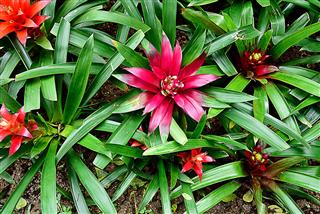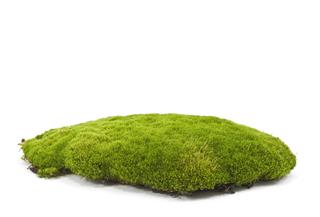
Primary producers are green plants which ‘produce’ their own food that makes life possible in a forest.
Did You Know?
The canopy in tropical rainforests is so dense that rain falling on top can take 10 minutes to reach the ground.
Tropical rainforests are those which are located near the equator. These areas have warm temperatures and receive large amounts of rainfall, which creates a humid atmosphere, allowing specific plants and animals to thrive. Such rainforests are found in parts of Central America, West Africa, Madagascar, and Southeast Asia. They show the maximum biodiversity that is found anywhere on this Earth. In fact, one study alone showed that between 100 to 300 species of trees were found just in one hectare of a South American tropical rainforest.
All animals and plants of the tropical rainforests play vital roles in each other’s survival, and share important relationships. An example of such a relationship would be a wild hog eating fallen fruits to survive, and a jaguar then hunting and eating the hog. Here, it’s obvious that neither the hog nor the jaguar would survive without the tree which produces the fruits, or all such similar trees. This is because, the trees convert the non-living, chemical substances from the soil into food (like fruits) by photosynthesis. So, such trees are called producers. Given below are the major primary producers in the tropical rainforest, in no specific order.
Dominant Producers in the Tropical Rainforest
Canopy Trees
Leaves of the canopy trees release a lot of water during transpiration, which accounts for most of the rainfall occurring in the area. The leaves and seeds feed many species of herbivores. In return, the tree itself depends on many creatures during its different life stages: bats for pollination, birds for consuming the fruits and processing their seeds, and so on.
The rainforest is well-identified by the presence of huge trees which form an umbrella-like canopy at the top. These trees can grow to be about 150 feet tall, and account for some of the highest productivity rates in the rainforest, as they trap almost 80% of all sunlight falling on the canopy. These trees are characterized by long, pole-like stems that branch only near the top, and grow prop and buttress roots to support them, which makes them appear even taller.
Lianas
Lianas are woody vines that are known to grow thousands of feet in length, and about as wide as a rainforest tree. More than 90% of all lianas occur in the world’s rainforests. They begin their life as small shrubs rooted to the ground. But since most of the sunlight falls on the canopy without reaching the forest floor, it’s imperative that they reach the treetops. To do this, they have spines near their leaves which adhere to the trees, and use them as staircases to climb to the top.
As they grow upwards, they form mats all around the rainforest. Since these vines climb to reach sunlight, most of their energy is spent in producing thick, leathery leaves and strong spines. The mats formed by the lianas serve as a refuge and means of conveyance for a wide range of arboreal creatures, besides being an important food source during the dry season. In fact, research has proven that lemurs prefer to nest on trees which have good liana growth. Rattan vines are an important example of lianas, which are widely harvested to make waterproof furniture, and have become endangered as a result.
Epiphytes
Epiphytes are plants which grow on top of rainforest trees, like a parasite, but, in fact, do not harm the host tree in any way. They absorb water and nutrients from the air, rain, and fog, using special roots which are exposed to the air. The reason why epiphytes adhere to trees is that this allows them to access the sunlight high up in the canopy, besides absorbing some nutrients from composted materials on the tree bark.
Epiphytes adhere to tree stems, leaves, and branches, and form mats throughout the forests, which provide food and refuge to many creatures like arthropods. They also allow the growth of beneficial fungi on their roots, which provide them with additional nutrients and water. In fact, some host trees even absorb water and nutrients from the epiphytes growing on them by developing aerial roots that access these plants. When arthropods and insects living in the epiphytic mats die, they decompose and provide the epiphyte with nutrients. Epiphytes account for more than 33% of all rainforest plants. They include bromeliads, orchids, ferns, and mosses.
Orchids
Orchids are the largest plant family in the world, famed for the beauty of their flowers. Globally, between 20,000 to 30,000 species are known, out of which, more than 80% are found in tropical rainforests. Their size varies, with some flowers being nickel-sized, while others may have petals 14 feet long, and weigh around a ton.
Orchids can grow on rocks, soil, and even underground, but most of them are epiphytes, as mentioned above, which means they grow adhering to canopy trees. This allows them to access the sunlight available in the higher reaches of the forest, making photosynthesis possible, and also exposes them to insects and birds for seed and spore dispersal.
Orchids have several fascinating aspects. One is that they allow special types of fungi, called mycorrhizal fungi, to grow in their roots, which provides them with additional nutrients and water. Another is that they have columns with both male and female sexual organs on one plant, such that insects can pick up pollen and also fertilize the same flower. Many species of orchids are endangered due to their increasing cultivation by humans.
Bromeliads
There are around 3,000 species of bromeliads in the world, most of which are found in the tropical rainforests. Bromeliads develop beautiful flowers, which may range in colors from reds and oranges to blues and violets. Along with flowers, they also have attractive foliage, which can assume colors like red and golden.
These plants can either grow in the soil, in which case they have complex root systems which access nutrients from the soil, or on rocks and trees, in which case they are epiphytes, and use air-borne roots which absorb water from the air, rain, and fog, and produce food by photosynthesis. This offers an unusual advantage to soil plants that the bromeliads do not compete with, to absorb water and minerals from the soil. Their leaves are rosette-shaped, with waxy surfaces that collect falling rainwater and plant debris like a bucket. This allows the growth of algae, attracting insects such as mosquito larvae. These conditions provide food and habitat to a diverse range of animals, like toads, snails, salamanders, and insects, most of which spend their entire life on a single plant. The most famous example of bromeliads is the pineapple tree.
Algae
Algae are simple, cellular plants, without any true roots, leaves, or stems. They have been proven to be the ancestors of all modern land and aquatic plants, having colonized the land millions of years ago to make conditions suitable for all the flora and fauna to follow. Algae are generally found on the surface of water bodies like rivers and lakes, though they may also occur terrestrially. In such cases, they occur either on soil, rocks, or on trees, called subaerial algae.
In tropical rainforests, algae occur everywhere, even on the hides of lizards, spiders, sloths, birds, and insects. A species called blue-green algae exists below the cuticle of leaves and on the barks due to the high moisture and nutrient content in rainforests. Such species are epiphytes, which grow on trees, absorb water and nutrients from the air, rain, and composting materials, and produce energy by photosynthesis. Thus, the tree is not harmed, and a habitat and food source is made available for insects and other animals. On dying, algae return nutrients to the soil, making it more fertile.
Moss
Mosses represent an evolutionary step-up from algae. They were the land plants which formed the first ecosystems, only about 5 feet in height. From afar, moss growth appears like a lush green carpet, while on a closer look, the individual plants can be seen. This carpet look owes to the plants’ habit of growing together. They are classified as bryophytes, which means, unlike algae, they have true roots, stems, and leaves.
They are non-vascular plants, which do not show any conducting tissues like xylem and phloem, that transport water and nutrients. This is the reason why they cannot grow to a large size like other land plants. Mosses have a life cycle which shows an alternation of generations. This means that they reproduce by spores in one generation, and by sexual methods in another. They also do not show flowering. The plant body is only a few cells thick in structure. Mosses thrive in the moist environment of rainforests, where they are found everywhere, like on tree trunks and rocks.
Fern
Ferns require a large amount of moisture to survive, which is present in the rainforests, and it is here that they are the most abundant. Ferns use the host tree as a stepping stone to reach sunlight, while the fallen leaves of the tree serve as nutrients. There are various types of ferns in the rainforests, such as the staghorn fern, golden chicken fern, Hawaiian tree fern, and so on.
Ferns encompass a diverse variety of plants, from those 3 – 4 mm tall to species 25 to 30 meters in height. In the tropics, they are epiphytes, which means that they grow on another tree without harming it. Theses plants do not show a true root system, instead using root-like structures called rhizoids to absorb nutrients and water from the soil. They are also unique, in that, they exist as two types of plants – a sexual one and another asexual one. The large, commonly-seen tree is the asexual generation which produces spores that develop into a small sexual plant, which only lasts for a few weeks. This short-lived plant gives rise to gametes, which undergo fertilization that ultimately produces a large asexual plant. It is thought that the Earth was initially inhabited by ferns before the arrival of forests.
Bamboo
Bamboo is one of the fastest growing plants known to man. They are famous for their long, cylindrical stems with hollow chambers, that can grow as high as 98 feet tall, and 3 inches wide, in just 2 – 3 months. A unique fact about them is that, despite being so large, they are from the family of grass, rather than trees. They reproduce by seeds, and their entire population flowers simultaneously, which may occur as rarely as once every hundred years.
Due to this, many species of bamboo are near extinction, just because there aren’t that many seeds around to spread them. Bamboos perform a range of functions in the tropical rainforest. They bind soil and prevent its erosion. During heavy rainfall, they accumulate water in the chambers of their stems, which otherwise would have caused floods. The fruits, seeds, leaves, and young shoots provide food and habitat for a variety of animals, like rats and lemurs.
As you can see, each of these producers play a vital role in the lives of countless organisms in the forests. For instance, just try imagining a rainforest without its iconic canopy trees. For this reason, conserving such plants will help not just animals, but even humans survive.



















